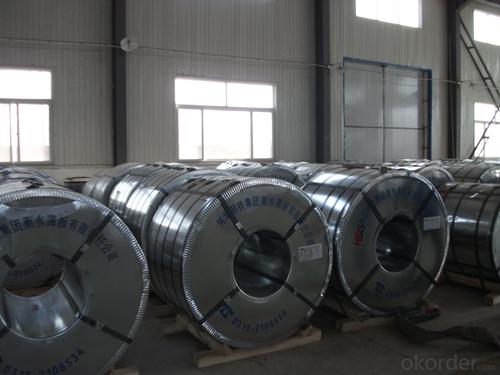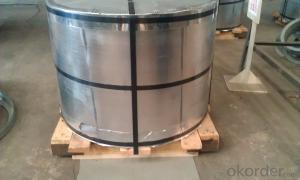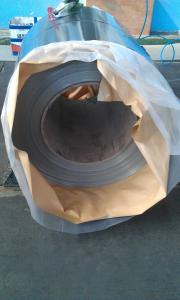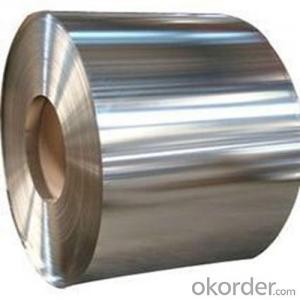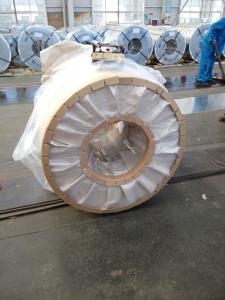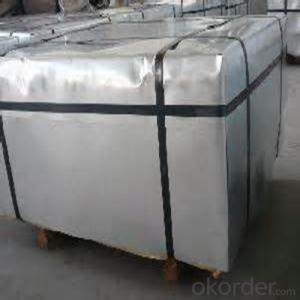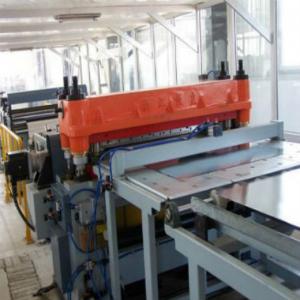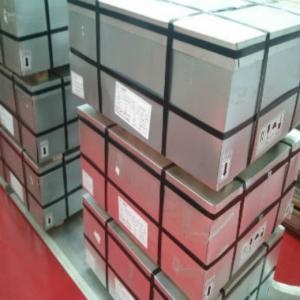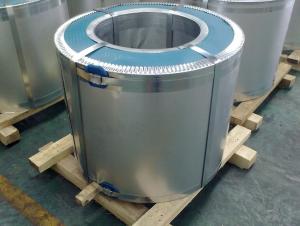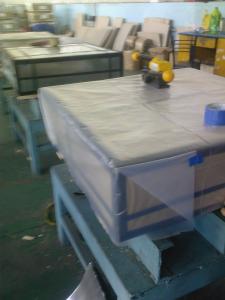Prime Electrolytic Tinplate for Metal Package of Chemical or Industrial Useage
- Loading Port:
- Shanghai
- Payment Terms:
- TT OR LC
- Min Order Qty:
- 25 m.t.
- Supply Capability:
- 30000 m.t./month
OKorder Service Pledge
OKorder Financial Service
You Might Also Like
Specification
1.Structure of Prime Electrolytic Tinplate for Metal Package of Chemical or Industrial Useage Description
Electrolytic Tinplate undoubtedly enjoys the pride of place as a packaging medium especially for food. It owes its unique position to its "nine layer sandwich structure", each of which contributes to its eminence as a packing material. The steel base of electrolytic tinplate provides the necessary strength and formability for can fabrication. The tin-iron alloy layer provides the bond between the steel and free tin layer. The free tin layer is not only responsible for the attractive bright finish and ease of solderability but is also non-toxic- a factor of vital importance in food packaging!
2.Main Features of the Prime Electrolytic Tinplate for Metal Package of Chemical or Industrial Useage
The origin of tinplate is from Bohemian, from 14th century, the people there began to produce tinplate. Also known as electrolytic tinplate, which stand for tin coating on the surface of cold rolled coil for preventing rust. The unique characteristics of tinplate steel decides its comprehensive range of application in international tinplate packaging industry. With the abundance extend of CC and DR steel material, and tin free steel, which enhance the development of technology of packaging industrialization, the innovation is ubiquitous in tinplate steel.
Tin is not good for low temperature applications since it changes structure and loses adhesion when exposed to temperatures below – 40 deg C.
3.Prime Electrolytic Tinplate for Metal Package of Chemical or Industrial Useage Images
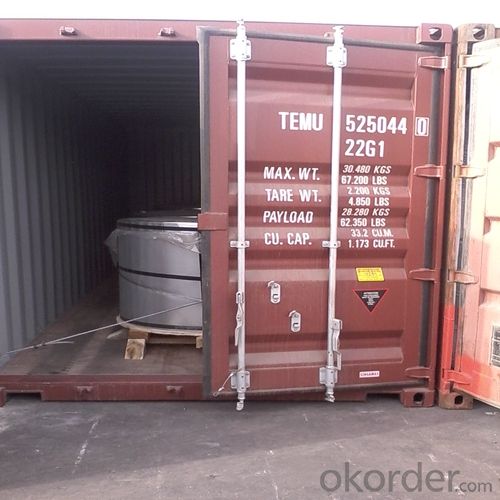
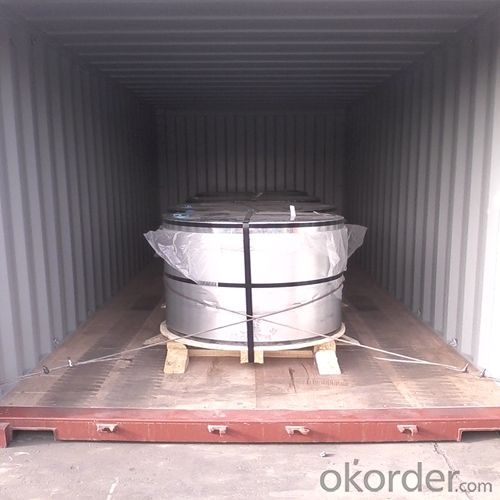
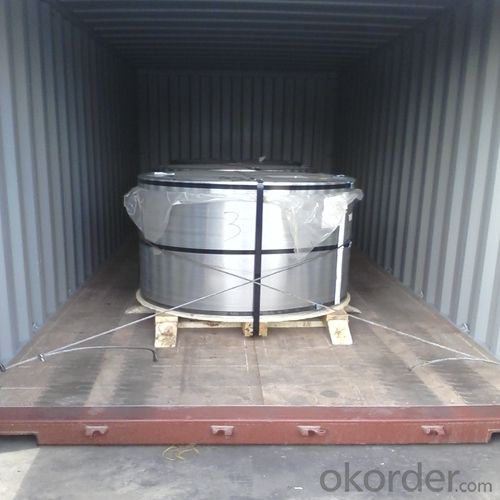
4.Prime Electrolytic Tinplate for Metal Package of Chemical or Industrial Useage Specification
Specification of :
Standard: ISO 11949 -1995, GB/T2520-2000,JIS G3303,ASTM A623, BS EN 10202
Material: MR,SPCC
Thickness:0.15mm - 0.50mm
Width: 600mm -1150mm
Temper: T1-T5
Annealing: BA & CA
Coil Inner Diameter: 508mm
Weight: 6-10 tons/coil 1~1.7 tons/sheets bundle
Passivation:311
Oil: DOS
Surface: Finish,bright,stone,matte,silver
5.FAQ of Prime Electrolytic Tinplate for Metal Package of Chemical or Industrial Useage
- What is tinning and how does it work?
Tinning is the process of thinly coating sheets of wrought iron or steel with tin, and the resulting product is known as tinplate. It is most often used to prevent rust.
- Do you only have prime quality tinplate?
We can supply both prime and second quality tinplate.
- Q: Can tinplate be used for microwaveable packaging?
- No, tinplate cannot be used for microwaveable packaging as it is a metal material and will cause sparks or fire when exposed to microwave radiation.
- Q: How is tinplate coated with organic materials for specific applications?
- Tinplate is coated with organic materials for specific applications through a process called organic coating or lacquering. The tinplate is first cleaned and prepared to ensure proper adhesion of the organic coating. Then, a layer of organic material such as epoxy, polyester, or acrylic resin is applied to the tinplate surface using various methods like coil coating or spray coating. This organic coating provides protection against corrosion, enhances the tinplate's appearance, and allows for customization based on specific requirements of the application.
- Q: What are the main considerations for choosing tinplate suppliers?
- The main considerations for choosing tinplate suppliers include the quality of their products, their pricing and pricing structure, their production capacity and lead times, their ability to meet specific requirements and customizations, their reputation and reliability, their customer service and support, and their sustainability and ethical practices.
- Q: Can tinplate be used for packaging hazardous materials?
- Yes, tinplate can be used for packaging hazardous materials. Tinplate is a type of steel coated with a thin layer of tin, providing excellent resistance against corrosion and creating a protective barrier. This makes it suitable for containing and transporting hazardous materials safely, as it helps prevent leaks or contamination. Additionally, tinplate is also recyclable, making it an environmentally friendly choice for packaging hazardous substances.
- Q: What are the main trends in tinplate packaging?
- The main trends in tinplate packaging include a shift towards sustainable and eco-friendly options, increased customization and personalization, advancements in technology for improved production processes, and a growing demand for convenience and functionality in packaging design.
- Q: What are the main challenges in the disposal of tinplate products?
- The main challenges in the disposal of tinplate products include the need for proper recycling infrastructure, as tinplate is a complex material to separate and recycle. Additionally, ensuring the collection of tinplate products from various sources can be a logistical challenge. Furthermore, the presence of any hazardous materials or coatings on the tinplate can pose environmental risks if not managed properly. Lastly, promoting awareness and educating consumers about the importance of responsibly disposing of tinplate products can also be a challenge.
- Q: Can tinplate be used for paint can packaging?
- Yes, tinplate can be used for paint can packaging. Tinplate is a commonly used material for making paint cans due to its durability, corrosion resistance, and ability to protect the paint from external factors. It is also easy to print on and provides a smooth surface for labeling and branding purposes.
- Q: Can tinplate be used for packaging frozen foods?
- Yes, tinplate can be used for packaging frozen foods. It has excellent durability and resistance to temperature fluctuations, making it suitable for preserving the quality and freshness of frozen food products. Additionally, tinplate offers a high level of protection against moisture, light, and oxygen, further ensuring the integrity of the frozen food during storage and transportation.
- Q: What are the main factors influencing the growth of the tinplate industry?
- The main factors influencing the growth of the tinplate industry include increasing demand for canned food and beverages, growth in the packaging industry, technological advancements in tinplate production, and the rise in urbanization and disposable income leading to higher consumption. Additionally, environmental concerns and regulations promoting sustainable packaging solutions have also contributed to the growth of the tinplate industry.
- Q: What are the disadvantages of using tinplate in packaging?
- One disadvantage of using tinplate in packaging is that it can be more expensive compared to alternative packaging materials such as plastic or cardboard. Additionally, tinplate is prone to corrosion, which can compromise the integrity of the packaging and lead to product spoilage. It is also heavier than other materials, which can increase shipping costs and carbon footprint. Finally, tinplate is not as easily recyclable as some other packaging materials, contributing to environmental concerns.
Send your message to us
Prime Electrolytic Tinplate for Metal Package of Chemical or Industrial Useage
- Loading Port:
- Shanghai
- Payment Terms:
- TT OR LC
- Min Order Qty:
- 25 m.t.
- Supply Capability:
- 30000 m.t./month
OKorder Service Pledge
OKorder Financial Service
Similar products
Hot products
Hot Searches
Related keywords



